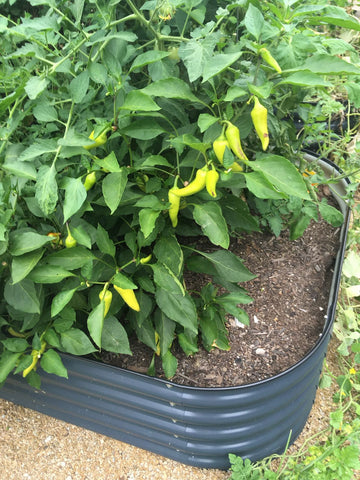Tips from Olle Garden Bed: Improve Harvest Shrough Overwintering Pepper
Sometimes you can't help boasting. So, if you can indulge me for a while, I'd like to share my extraordinary performance in chilli this year. The following content also has some reference value for raised garden beds.
They were sown a month before my last frost date and germinated on the windowsill indoors. I didn't disturb the breeder, but I did make the old transparent polyethylene bag on the pot to keep the humidity. I admit that seedlings sprout slowly, but once they (finally!) When they appeared, I moved them to the greenhouse, which was already warming up. The seedlings shall be potted regularly to keep them growing steadily. Since the second half of summer, they have been producing one pepper after another - after the pepper!

Moving chillies indoors in winter
Most gardeners plant all types of peppers as annuals: seed, plant, pick, and then put them in compost at the end of the season. However, these hard-working plants are perennial plants. If conditions are right, they will happily overwinter until next year.
Why bother? Because cajoling chili peppers for another year will allow you to immediately seize the opportunity in the new growing season, shorten the fruit production time, extend the picking period and provide you with a heavier overall harvest. Sounds good to me!
To succeed, you need to start with healthy plants that can provide a frost free place for your chilies and keep looking for their killer aphids. My chili makes me proud. Seeing that I have windowsill space, it is reasonable to try to survive the winter.
Prepare pepper for winter
It is best to start with the pepper that has grown in the flowerpot. This avoids any unnecessary root interference and reduces the risk of failure. That is to say, if you have strong and healthy plants growing underground, try to dig out as many original root balls as possible, and then plant them in a large container, and feed fresh potted mixture on both sides. You need to reduce the top growth by half to three quarters to allow the inevitable root loss, but with good luck, you should succeed.
Capsicum grown in containers may be pruned to fit the space where you must overwinter. Make each cut above the bud and use a sharp, clean cutter. With the development of autumn, the stem may die further. This is absolutely normal - no need to panic! Just trim the green position of the stem back. Any remaining leaves may also turn yellow and fall off, which is completely normal; Some plants will have no leaves in winter, but will grow again in spring.
Temperature, light and water demand
Wintering chilies need to be kept comfortably above freezing point. In most cases, indoor windowsills away from heat sources are good. The greenhouse will also work well.
The light level in winter is already very low, but even lower indoors, so put the pepper on the most sunny windowsill you can find. Similarly, greenhouses will be the ideal choice because the light quality there is generally superior.
Keep plants almost dry. The potting mixture should almost dry before watering. You will find that you need very little water because the plants start to close at low light levels. Let the plant absorb the water from each watering, but then make sure that any excess water is discharged freely from the bottom of the pot, so that the root will not sit in the water.
Aphids are a problem indoors, and your wintering pepper is more likely to be their host. Don't worry. Every time they resurface, just remove them from the plants, flatten them with a damp cloth and wipe them clean, or spray them with water.

Revived overwintering chilli
About one and a half months before the last frost date, pepper shall be potted again into fresh multipurpose compost, and a small amount of organic general-purpose fertilizer shall be mixed to promote the growth of plants. Scrape off about 3-5 cm (1-2 inches) of old growth medium from around the root ball, and then put it into the same container or a slightly larger container again with fresh compost. Once you notice the first signs of regeneration, start watering more frequently. Plants can enter greenhouses or hoop houses a week or two before the last frost date. If you predict an unusually cold night, you can bring the plants indoors at any time.
With the increase of light level and temperature, the leaves will become thicker and faster soon, and new branches will grow out. Once the plant starts to produce flower buds, it is time to feed the pepper again, and use liquid feed with high potassium to promote flowering and fruiting. If you do it right, you should bear the first batch of fruits a whole month before planting plants in spring. Good luck!
